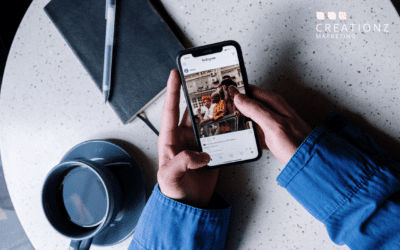
The 10 Benefits of Having a Marketing Mentor for Employers
Why Mentoring Matters For Your Business:
Navigating the fast-paced world of marketing can be overwhelming – especially for small business owners and teams managing multiple roles.
That’s where a marketing mentor comes in.
At Creationz Marketing, we understand the pressure to stay ahead of trends, deliver results, and grow your team’s capability. That’s why we created The Marketing Mentor Hub – a space where businesses can access personalised, expert-led support to build confidence, sharpen skills, and drive real marketing impact.
So, what’s in it for you as an employer?
Here are ten powerful reasons why investing in a marketing mentor is one of the best things you can do for your team and your business.
1) Accelerated Learning For Your Team
Mentors fast-track development by sharing real-world knowledge, insights, and tips that take years to learn through trial and error. This means your team becomes more skilled, more quickly – delivering better results, faster.
2) Personalised Support For Staff Development
Every team member is different and mentorship takes that into account. Whether it’s building confidence in content creation or getting to grips with analytics, tailored advice leads to better outcomes and higher employee satisfaction.
94% of employees would stay at a company longer if it invested in their career development. *Deloitte
3) Stronger Problem-Solving Skills
Marketing comes with its fair share of challenges. Mentors teach your team how to approach problems logically and creatively, using proven frameworks to find the right solutions.
*Harvard Business Review found that collaborative problem-solving can improve performance by 30%.
4) Access To A Wider Network
A good mentor opens doors. From connecting with other professionals to recommending trusted tools and suppliers, this network can lead to valuable partnerships and new opportunities for your business.
5) Boosted Team Confidence
Mentors help your team believe in their abilities. With encouragement, constructive feedback, and space to grow, confidence rises – leading to better performance and more ownership over their work.
Employees with high self-efficacy are 50% more likely to stay committed to challenging goals. APA*
6. Staying Ahead With Industry Trends
The marketing world never stops moving. From algorithm changes to new tools, mentors help your team stay sharp, current, and ahead of the curve keeping your business competitive.
7) Goal Setting & Accountability
Mentors keep your team focused with realistic goal setting and regular check-ins. This structure helps drive results and keeps professional development on track.
8) Support For Career Progression
Mentors don’t just help your team in their current role – they prepare them for what’s next. From leadership readiness to portfolio building, it’s a win for employee retention and growth.
Companies with mentoring programs have a 20% higher retention rate. Association for Talent Development*
9) Improved Day-To-Day Performance
By learning directly from experienced professionals, your team becomes more efficient and effective creating better campaigns, making smarter decisions, and contributing more to your bottom line.
10) Encouraging Personal Growth
Mentorship goes beyond marketing skills. It helps your team build resilience, improve communication, and become more adaptable all essential qualities in a modern business.
Companies with a strong focus on leadership development outperform peers by 20%. Center for Creative Leadership*
Ready To Unlock These Benefits For Your Business?
The Marketing Mentor Hub is your team’s go-to space for expert-led support, tailored development, and practical guidance that delivers real results. Whether you’re looking to boost confidence, sharpen marketing skills, or simply give your team a space to grow – we’re here to help.
👉 Explore the Mentor Hub and get 15 DAYS FREE with code MENTOR15



 . .
. .  .
. 




